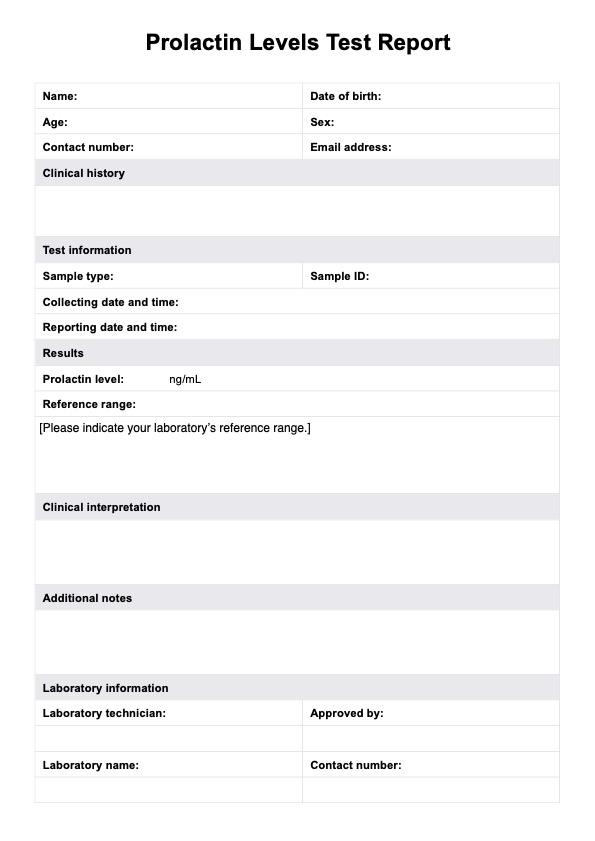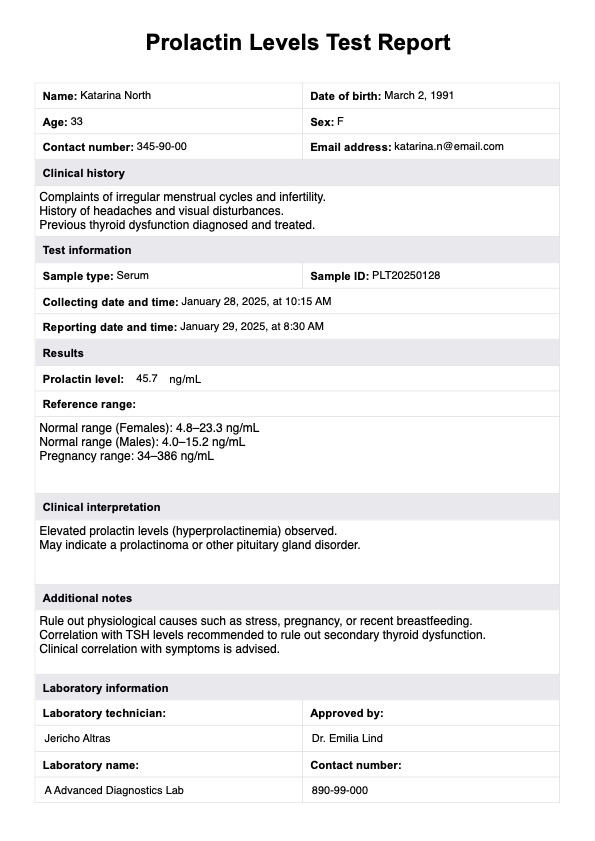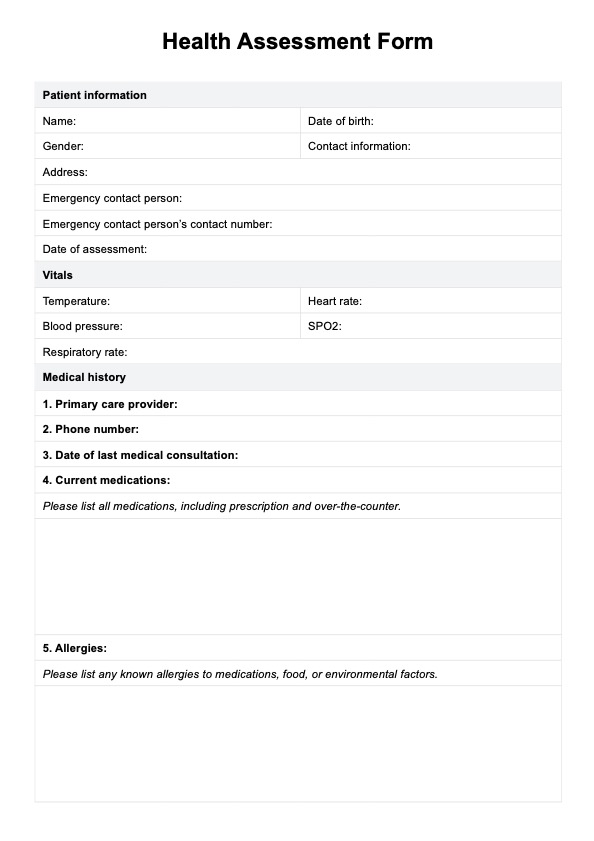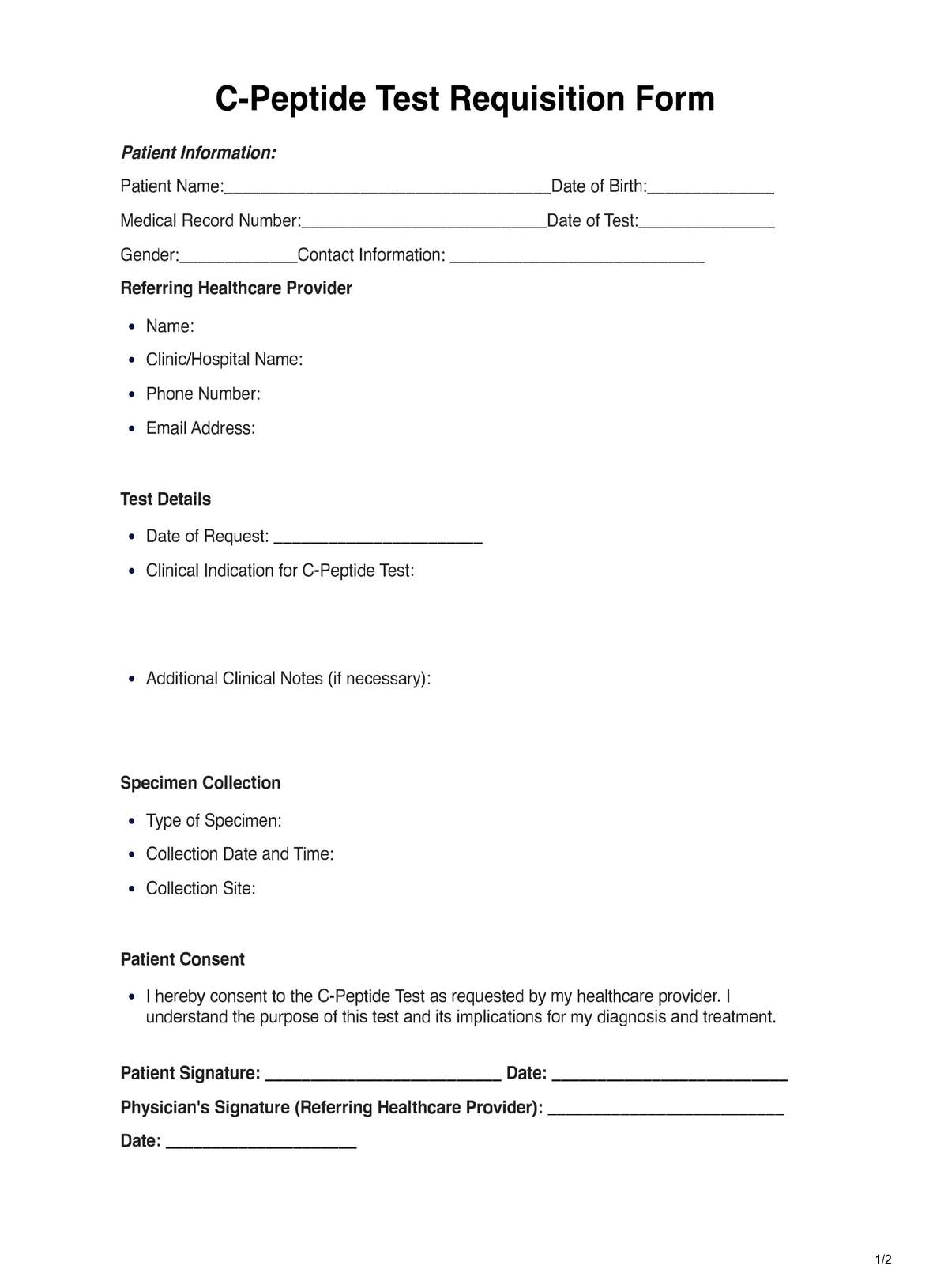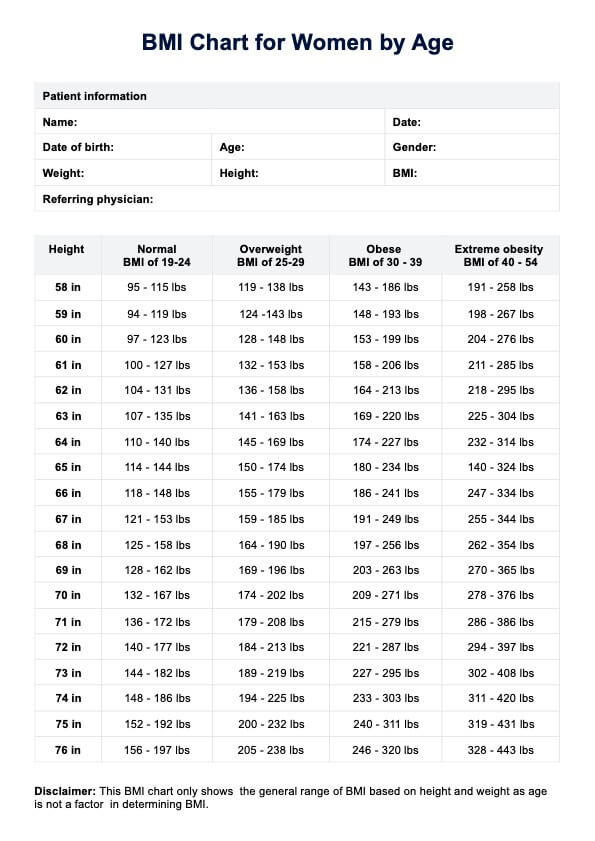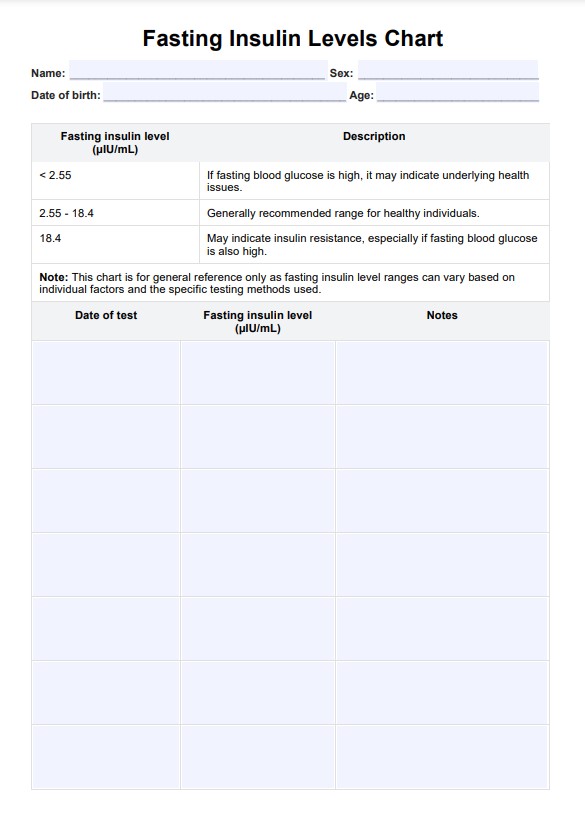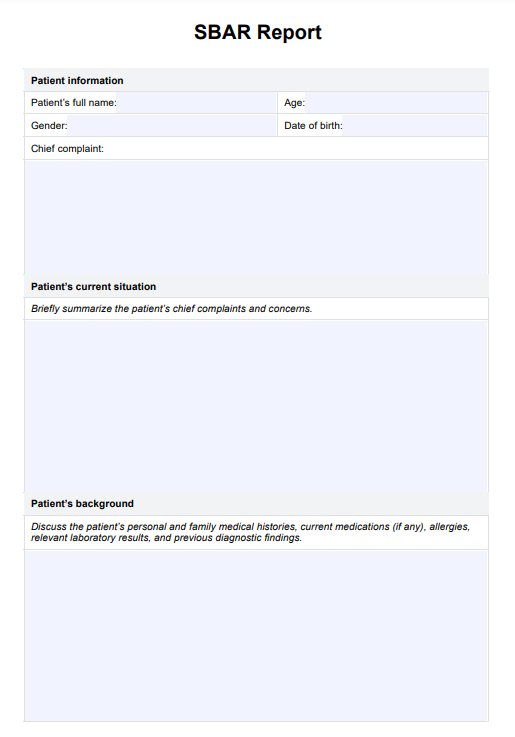Prolactin Levels Test Reports
Get a free Prolactin Levels Test Report template. Learn about the importance of this test and how to interpret results.


What is a prolactin levels test?
A prolactin levels test is a blood test designed to measure the levels of the prolactin hormone in the body. Prolactin, produced by the pituitary gland, is primarily responsible for stimulating breast milk production in women. However, both men and women have prolactin in their bodies, and abnormal levels can signal various health conditions.
This test is essential for assessing hormonal health, as prolactin levels can indicate issues such as excess prolactin (hyperprolactinemia), pituitary tumors, and thyroid-stimulating hormone (TSH) imbalances. Abnormal levels may also affect the prolactin receptors in the body, potentially leading to reproductive challenges. Prolactin tests are also used to monitor the effectiveness of treatments, such as dopamine agonists, which help regulate prolactin levels.
The prolactin test measures prolactin levels using a simple blood draw, typically from a vein in the arm. This test does not require fasting or specific preparation. However, patients need to inform their healthcare provider about any medications or supplements they are taking, as these can influence the results.
Once the blood sample is collected and sent to a laboratory for analysis, the results are reported in nanograms per milliliter (ng/mL), and a healthcare provider interprets these values to determine whether prolactin levels are within the normal range or indicate a health concern.
Prolactin Levels Test Reports Template
Prolactin Levels Test Reports Example
How to use our free template
Our free Prolactin Levels Test Report template allows you to record your patient's prolactin levels test results quickly. Here's how to use the template:
Step 1: Access the template
Open the template via the Carepatron app by clicking the "Use template" button. This lets you customize the form based on your clinic's specifications. You can also download a PDF version by choosing "Download."
Step 2: Enter patient information
Enter the patient's details, including their name, date of birth, and gender. This will help you keep track of the report and identify which patient it belongs to.
Step 3: Indicate reference range and results
Document your lab's reference range in the template and write the patient's test results. You can also include any relevant notes or comments regarding the results.
Step 4: Review and interpret results
Review and interpret the results in light of the patient's medical history and current health status. Use your professional expertise to determine whether further action or treatment is necessary.
Step 5: Document in the patient's records
Once you have interpreted the results, document them in the patient's electronic health records for future reference. This will also help track the patient's progress over time.
Step 6: Share with the patient
Share the test report on prolactin levels and your interpretation of the results with the patient. Use simple and understandable language to explain the results and recommend the next steps.
When would you use this test report template?
You can use the Prolactin Levels Test Report template when performing a prolactin levels test for patients as part of their routine health checkups or to monitor specific conditions or treatments. Moreover, you can utilize this template to:
Identify any potential abnormalities or patterns in the results
By documenting the patient's prolactin levels over time, you can identify any possible abnormalities or patterns requiring further investigation or treatment. This will also help track the effectiveness of any prescribed treatments or lifestyle changes.
Educate patients on the role of prolactin in their overall health
Many patients may need to be made aware of the importance of prolactin in their overall health. This template can be used to educate patients on the functions of prolactin in the body and how it may affect their well-being.
Form a comprehensive treatment plan
The Prolactin Levels Test Report can also be critical in creating a comprehensive treatment plan. You can make informed decisions about medication types, dosages, and any necessary lifestyle adjustments by understanding the detailed fluctuations in the patient's prolactin levels over time.
Provide tangible proof of progress
The Prolactin Levels Test Report provides patients with tangible proof of their progress or changes in their condition. Seeing the impact of their efforts, whether adhering to a medication regimen or making lifestyle changes, can motivate them to continue their treatment or make any necessary adjustments.
Collaborate with other healthcare professionals
You can also share the Prolactin Levels Test Report template with other healthcare professionals involved in the patient's care. This can facilitate better collaboration and communication between different providers, leading to more comprehensive and personalized treatment plans for the patient.
What do the results mean?
The prolactin levels in the blood can provide important insights into a patient's overall health. High or low levels of Prolactin may indicate underlying medical conditions or hormone imbalances that require further evaluation and treatment. It is essential to interpret the results regarding the patient's age, gender, and other relevant factors.
High prolactin levels
Elevated prolactin levels may indicate various physiological or pathological causes. Physiological causes include pregnancy, breastfeeding, stress, or intense physical activity. Pathological causes involve conditions such as prolactinoma (a benign tumor of the pituitary gland), hypothyroidism, kidney disease, or liver cirrhosis.
Certain medications, such as antipsychotics and anti-nausea drugs, may also contribute to increased prolactin levels. Symptoms of hyperprolactinemia often include irregular or absent menstrual cycles, infertility, and nipple discharge in women. Men may experience erectile dysfunction and reduced libido.
Normal prolactin levels
Normal prolactin levels typically indicate a healthy pituitary gland and balanced hormone production. While ranges can vary slightly depending on the laboratory, general guidelines include less than 20 ng/mL for men, less than 25 ng/mL for non-pregnant women, and between 80 and 400 ng/mL for pregnant women (UCSF Health, 2022).
Low prolactin levels
Low prolactin levels are rare but may result from pituitary dysfunction or damage, such as from Sheehan syndrome—a postpartum complication. Although low prolactin typically does not require treatment, it may be associated with increased risks for conditions like metabolic syndrome in women (Medline Plus, 2020). Low prolactin levels in breastfeeding women can also cause insufficient milk production, which may require further medical evaluation.
It is important to note that these are general guidelines, and further testing and evaluation may be necessary to determine the underlying cause of abnormal prolactin levels.
References
Medline Plus. (2020, December 17). Prolactin levels: MedlinePlus lab test information. https://medlineplus.gov/lab-tests/prolactin-levels/
UCSF Health. (2022, August 12). Prolactin. https://www.ucsfhealth.org/medical-tests/prolactin-blood-test
Commonly asked questions
Prolactin test results are measured in nanograms per milliliter (ng/mL) and interpreted based on age, sex, and physiological conditions such as pregnancy. Normal levels are typically below 20 ng/mL for men, below 25 ng/mL for non-pregnant women, and between 80–400 ng/mL for pregnant women (UCSF Health, 2022). Deviations may indicate hormonal imbalances or underlying medical conditions.
Prolactin levels above 25 ng/mL in non-pregnant women or 20 ng/mL in men may be concerning and could indicate hyperprolactinemia. Levels exceeding 200 ng/mL often suggest a prolactinoma, a benign pituitary tumor that requires further evaluation.
A prolactin test is not part of a complete blood count (CBC). It is a specific hormone test used to measure prolactin levels in the blood and assess pituitary function. It is often ordered separately when hormonal imbalances or related symptoms are suspected.


